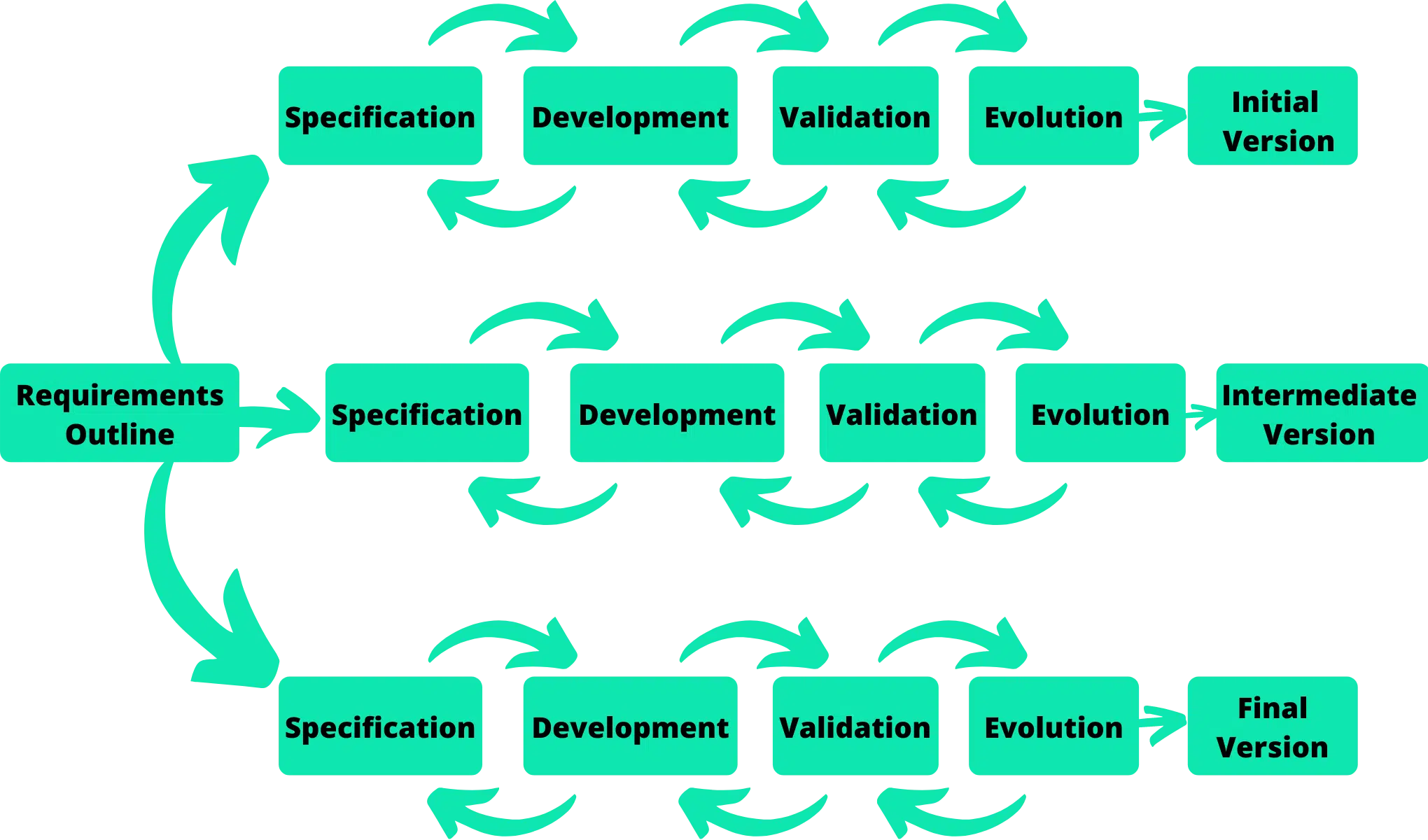“Agile” is a common keyword associated with a particular method, methodology, process, or model that’s employed that has characteristics or principles to adhere to in the context of software engineering, development and project management. So then, what exactly is it?
For many software systems in this day and age, one of the most prioritized requirements is a fast development process and a shorter time for delivery. This is especially true as businesses operate in rapidly-changing environments with ever-changing requirements. Thus, the system in development has to adapt and evolve rapidly to conform to these changing business demands.
Therefore, this along with discontent with extensive overheads and reworks sparked the birth of agile development in the late 1990s. Its primary aim is to shorten the delivery time of functional software systems.
Therefore, this article examines the agile methodology, its characteristics and principles from a software engineering, development and project management context.
Table of Contents
What is Agile Development or Method in Software Engineering?
In agile development, the phases of the software development process, namely specification, design and implementation are interleaved. This means that an iterative approach is taken to the project management and software development where the system is developed in a series of increments or versions. Plus, the stakeholders are closely involved in this development process, mainly for the specification and evaluation stage. So, this model closely relates to the incremental development methodology.
We recommend checking out our guides for more information on process interleaving and the incremental development methodology in software engineering.
An agile method ensures rapid and frequent delivery of functional versions that can be continuously evaluated and reviewed. Along with that, extensive tools and automated testing mechanisms are utilized to support the tests and development process. On top of that, there’s minimal documentation as the utmost focus is on producing the functional programs.
Overall, in an agile method, to ensure the system responds to changing requirements, the requirements, plans, and deliverables are reviewed continuously. Thus, the developers wouldn’t have to backtrack on their work as a result of some requirements changes. Plus, it aims to maximize the value that’s delivered to the client while reducing the chance of developing products that don’t fulfil stakeholder, business or market requirements.
How is Agile Development Implemented in Development and Maintenance?
For development, in many software development teams, the agile methodology is executed by combining various frameworks and adopting agile practices (e.g. regular backlogs, reviews, etc.). So, today, it’s typically applied by software companies for almost all software products and applications.
As for the maintenance and testing stage, most organizations tend to fork out more funds on maintenance of existing systems than developing new software. Therefore, by applying the agile method successfully, they can support maintenance as well as the original development.
Nonetheless, the issues with performing agile maintenance include:
- There’s lesser documentation done for the product
- It’s difficult to maintain customer involvement in the development process
- There’s a challenge in maintaining the continuity of the software development team
Therefore, it’s clear that this agile methodology depends on the development team to know and comprehend the tasks to be completed and not rely on the client. Thus, this can be an issue for systems with longer lifetimes as the development teams are constantly changing.
On that note, it’s believed that the agile methodology is more effective when the software is developed amongst a smaller group whose free to communicate informally. Thus, this may be difficult for larger-scope systems with even larger development teams where a plan-driven approach is more suitable.
Extreme Programming (XP)
Moving on, this led to the introduction of extreme programming (XP) in the late 1990s, another influential form of agile development, which applies an “extreme” approach to iterative development.
Here, new versions of the system are developed multiple times a day and even delivered for client use every few weeks. Similarly, tests are performed on every iteration’s deliverables to ensure they can pass the standards to be used commercially.
That being said, the principles and practices of extreme programming include:
- Incremental planning
- Small releases
- Simple design
- Test-first development
- Refactoring
- Pair programming
- Collective ownership
- Continuous integration
- Sustainable pace
- On-site customer
Scrum
Scrum is another term that falls under the umbrella of agile development. Essentially, it is an agile method that focuses on managing the iterative development of the system without concerning with particular agile practices.
Thus, scrum ensures that the product is divided into a set of manageable and easy-to-understand tasks. Additionally, scrum ensures that unstable or changing business requirements will not inhibit the development progress. Overall, scrum will ensure the entire team has clear visibility of this progress, especially through the delivery of the incremental builds.
Thus, promoting communication amongst them and helping the development team receive feedback. All in all, this creates a trust and positive culture between the client and development team which can drive everyone involved to expect the project’s success.
5 Principles of the Agile Method, Process, or Model in Software Engineering
1. Customer Involvement
A high priority is placed towards ensuring the customer is satisfied through early and continuous delivery of valuable and useful software. Throughout the software development process, the customer will be closely involved. The customer will be representative of all the system’s stakeholders.
They play an important role to test and evaluate the prototypes of the system and provide or prioritize additional system requirements for the developer to take note of. Customer feedback is crucial for the developers to stay on track and produce a system that fulfils the customer requirements and expectations.
2. Incremental Delivery
In agile development, the software is developed in increments and delivered to the customer for testing. The customer will specify the requirements that should be fulfilled in each increment. As customers get to try each incremental version, this helps the developer to integrate or incorporate any additional feature or requirement changes proposed by the customer. Thus, employing such an incremental development model allows and easily accommodates changing requirements, even if it’s late in the development schedule.
3. People, Not Process
Thirdly, the agile method puts emphasis on people rather than the process. Through the agile method, we’re taking into consideration and putting emphasis on the resources or skills we have at hand at a particular time. In this case, the skills of the software development team are recognised and utilised.
That way, the members of the development team employed for this particular system, will be granted the freedom to develop their own way of working without having to strictly follow a prescriptive or predetermined process. Thus, the software is built around individuals who are motivated and passionate about the project at hand.
At the same time, they’ll need a supportive environment with trust to help motivate them in their software development work. Thus, a key part of agile development is seen to be empowering individuals and development teams through trust and autonomy. This team will need to be assembled with the right manpower that possesses the suitable skill set catering to the project at hand. As the work is in progress, it’ll be difficult for micromanaging the team members.
4. Embrace Change
An agile development mindset welcomes changing requirements, even if it’s late in the development schedule. The system should comply with a changing business environment and the requirement alterations it brings about. Thus, when designing the system, a priority should be placed to expect and accommodate changes in the design and system requirements further down the line.
5. Promote and Maintain Simplicity
Lastly, simplicity should be a priority both in the software itself as well as during the development process. It’s considered an art to capitalise and maximise the essential work done rather than the amount of work done. Thus, the priority is to complete work that has the most impact.
When possible, active work should be structured and organised in a way that eliminates complexity from the system. Thus, it’s easily understandable by others, including any future development team member that takes over.
Overall, simplicity is important as development teams are working under pressure with strict delivery schedules. Hence, team members can’t set a separate time to perform system simplifications.
Conclusion
To recap, agile methodology is an incremental development method that prioritizes the rapid development of software, regular delivery of functional software, and to minimize the overheads and documentation required in the system production. Thus, it ensures that an agile development team is formed with a common goal of producing high-quality code and a greater sense of accountability to fulfil requirements.
Therefore, this guide explains what exactly is the agile methodology, its principles as well as extreme programming and scrum in the context of software engineering.
That being said, we hope that you’ve found value in this guide and it’s been helpful in bolstering your understanding of the agile methodology.
Feel free to share this post with your fellow coders and software engineers!



















